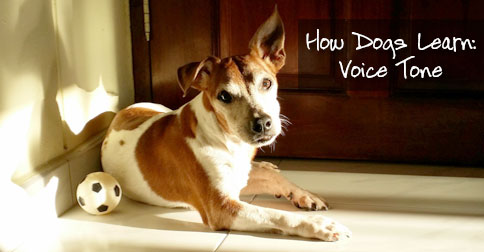
Voice tone is very important to your dog. Don’t believe it?
Have you ever said your dog’s name over and over when she is only a few feet away and she still doesn’t look at you?
This happens all the time. When your dog ignores you (assuming she isn’t deaf), it is because she has determined that you’re wanting her to do something she’s not willing to do at that moment. Plus, your tone of voice tells her that she’s got a little wiggle room—you don’t REALLY mean it.
Oh, you were serious?
Have you noticed when you reach a level of frustration, your dog will finally stop and pay attention, or turn toward you? This tone of voice indicates that you are serious, and usually the next action from you is to do something physical, such as grab her. Even subtle differences in your voice tone can create a reaction from your dog.
Pay Attention
One thing I focus on when beginning a training consultation is the specific behaviors a potential client wants to work on with their dog. One common answer is that they want their dog to listen and come when called.
I call this ‘Focus’. Any time your dog pays attention to whatever it is you want and reacts immediately to you, your dog is focused.
It takes a year of more of consistent communication to get true focus.
Voice tone is a very important aspect of whether or not you are serious, and as I said above, your dog will pick up on even the most subtle changes in your voice.
If an owner tells me their dog knows the sit command, I will ask them to demonstrate.
Get Serious
Usually they end up asking the dog to sit three or four times before the dog actually sits and I observe the changes in their voice and body language to get the dog to do the sit. This is where I explain to them that if their dog did not do the command on the first “sit,” then they are not doing it willingly.
Also, I will demonstrate (very over exaggeratedly) what they looked like when giving the command.
Overusing a command is a lot like overusing motivation as a method of training: It becomes less effective over time. This becomes a very important aspect in training and communication.
Leave a Reply